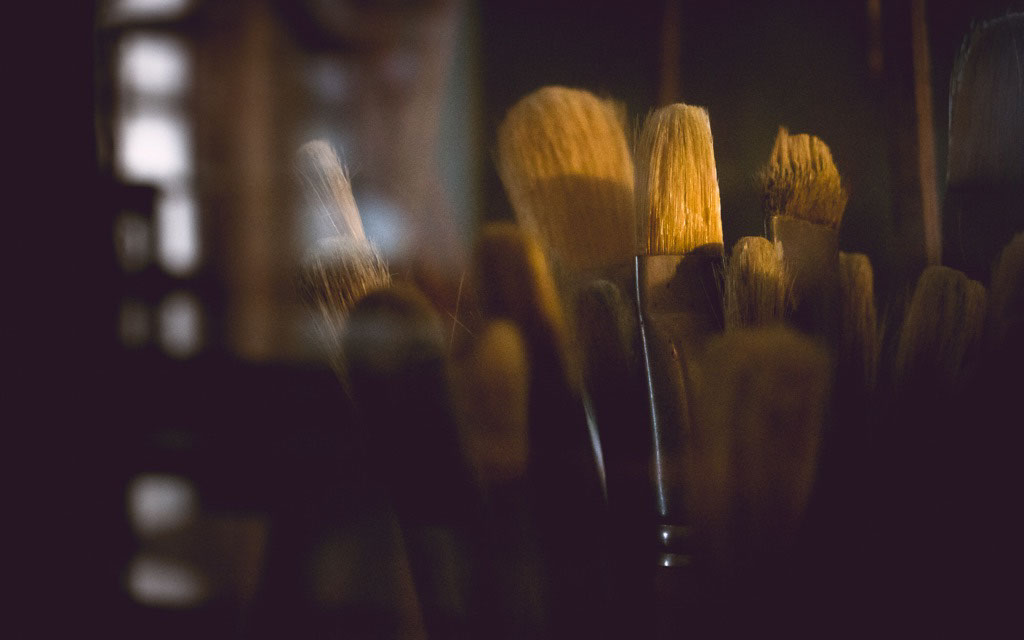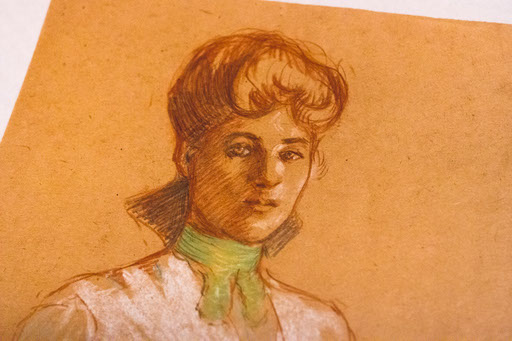Long Island Summers Of kate Freeman Clark
Since taking the helm of the Marshall County Historical Museum as Interim Director on 01 July 2013, Chelius Carter and the Museum’s intrepid staff have busied themselves with a thorough inventory of everything that is contained within its three floors, a formidable task. The inventory process is being done to make the collection searchable, as it will be logged into a database, making it more accessible for research and help in bringing more visitors to our area.
Though Lois Shipp’s daily presence is dearly missed, her impact upon the Museum and its immense collection assembled during her tenure is ever-present. The inventory process will be of help in planning future programs, thus ensuring that Miss Lois’ legacy will continue to evolve. The inventory process, though tedious, has not been without it “eureka” moments. In fact, if you were to take the tour at the Marshall County Historical Museum, you would uncover an array of oddities, old southern history, and estate treasures. There’s a feeling of archaeology, bringing to light buried treasures, as you take the tour. The itch of curiosity will no doubt, paw at your mind as the docents spin tales of ‘proper’ southern ladies, courageous soldiers, and lost fortunes.
Walking up to the second floor, it’s here, across from a gaggle of ladies in wedding gowns, that artist Kate Freeman Clark stands upright with one fist on her hip. She smiles out from the black and white photograph. She’s striking with her deep eyes and dark hair, tucked neatly under a sun hat. Her 1890s dress is perfectly, properly, straight.

In a second photo, Clark is preoccupied with the oil painting on her easel. The setting is William Merritt Chase’s painting school at Shinnecock Hills, Long Island. The year falls between 1896, and 1902, when Clark spent six consecutive summers on Long Island for study with Chase. These were reported to be her happiest, and most productive years as a painter. Her smile in the photograph beams.
A native of Holly Springs, Mississippi, Clark was sixteen years old when her mother, Cary Ann Freeman Clark, enrolled her in the Arts Students League of New York in 1891. There, she studied under renowned American painter, William Merritt Chase.
Chase, who was recognized as one of the most influential art instructors for American Realism during the 19th Century, taught at the Art Students League from 1878 to 1896. Kate is said to have been one of his favorite students, and the master referenced her work during class critiques. Chase also collected a few of her paintings for his private collection, and painted a few portraits of her from life.
In 1891, Chase opened his summer home on Long Island as the Shinnecock Hills Summer School. The curriculum was based on the European “plein air” schools that were popular at the time, where students painted landscapes directly in the great outdoors. The summers away from the Art Students League gave Chase leeway to demonstrate impressionist painting techniques he had seen in French art exhibitions.
During her time at the Long Island Island Summer School, Clark produced numerous landscape paintings in pastels, watercolor, and oil. Many of these landscapes can be seen at the Kate Freeman Clark Museum in Holly Springs, Mississippi.
However, if you’re curious about the tools Kate Freeman Clark used to create her fine art, they can be seen in the permanent collection next to her photographs at the Marshall County Museum. Items include Clark’s chalk pastels with their original wooden box, cups of watercolor pigment, and a variety of bristle oil brushes. Clark’s watercolor sketchbooks and wooden easel are also present.

This week, the Museum is delighted to announce the discovery of several original sketches by Kate Freeman Clark. The sketches are yet to be on display, but the Museum looks forward to proudly showing these exceptional drawings by this great American Impressionist.
This article has been edited for Slate. It was written and photographed by Megan Wolfe, and was first published in The South Reporter in 2013.
To read more about the Marshall County Historical Museum’s holdings and their history, visit their Facebook page at: www.facebook.com/mchistoricalmuseum. The Museum is open from 10 – 4 Monday through Friday and Saturday by special arrangement; call 662.252.3669.